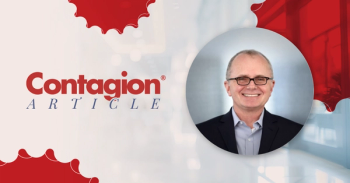
World AIDS Day 2018: How Far Has the HIV/AIDS Pandemic Come?
On December 1, 2018, international health organizations reflected on the advancements of the HIV/AIDS research field and acknowledged the challenges that still remain such as treating comorbidities and confronting stigma.
Each year,
With a commitment to reducing HIV mortality and introducing treatment to all, international organizations across the globe observed World AIDS Day on December 1, 2018.
The annual commemoration was first initiated by the World Health Organization (WHO) in 1988 as a day to unite the world in the fight against HIV/AIDS. Now, 30 years later, it is an opportunity to reflect on scientific advances in the field, evaluate the quality of life of people living with HIV throughout the world, and assess the progress towards ending the epidemic.
In honor of World AIDS Day, the National Institutes of Health (NIH) released a statement reflecting on the advancements that have been made since AIDS was first reported in 1981. These advances include antiretroviral therapy, which when taken daily can suppress HIV to levels that are undetectable while preventing sexual transmission of the virus.
Additional advancements include a range of options to prevent the acquisition of HIV, including pre-exposure prophylaxis (PrEP), which can
Despite these advancements, the NIH is skeptical that the pandemic can be resolved with these methods alone.
“If these methods of treatment and prevention could be widely implemented, an end to the HIV pandemic would be feasible,” the authors of the
The NIH has indicated that the development of a safe and effective HIV vaccine is the main priority for investigators in the HIV field. While investigators across the globe are working on evaluating different ways to develop a vaccine, including an empiric approach as well as an approach focusing on broadly neutralizing antibodies, the statement acknowledges that there are several complications and conditions that can affect people living with HIV.
Complications can manifest in individuals living with HIV even when the virus is well controlled. For example, tuberculosis is the leading cause of death in people living with HIV around the
As such, global health organization, such as the WHO, are reflecting on the need to address comorbidities of HIV and provide health care and treatment to all individuals living with HIV.
“The future of the HIV response will also require looking beyond HIV care provision and ensuring that the disease response is embedded in universal health coverage.” Naoko Yamamoto, PhD, MPH, Assistant Director-General for Universal Health Coverage and Health Systems, WHO, said in a recent
Although the WHO is encouraging the integration of HIV treatment with other health services, the organization is alos providing a reminder to all that being aware of your individual HIV status is critical. According to the WHO, 1 in 4 individuals living with HIV are unaware of their status.
To address the gaps, the WHO has partnered with international organizations to support a self-testing initiative in several African countries, which not only provides testing but also links individuals with treatment and prevention services.
However, the WHO also acknowledged that stigma still plays a large role in hindering
“When we look at our efforts in improving our fight against the epidemic in general - stigma is one huge factor that holds us back,” Mercy Ngulube, an HIV activist, emphasized in a WHO
In fact, early findings from the
The survey, developed by the International Association of Providers of AIDS Care, in partnership with the Joint United National Programme on HIV/AIDS, the Global Network for People Living with HIV, and the International Community of Women Living with HIV, supported by a grant from ViiV Healthcare, aims to provide insight into the quality of life of people living with HIV from 29 cities around the world.
The initial results provide snapshots from a variety of cities and report specific findings from Bangkok (Thailand), Durban (South Africa), Madrid (Spain), Miami (USA), and Salvador (Brazil).
The findings of the initial report demonstrate a “significant disparity” in the levels of stigma experienced in the 5 different cities.
In Salvador and Bangkok, participants reported low levels of stigma and discrimination, 16% and 11% respectively; however, in Miami, Durban, and Madrid, 66%, 42%, and 32% of respondents, respectively, reported feeling stigmatized by their communities in the past year.
“Where stigma exists against people living with HIV, the dignity that should be afforded every human being and the benefits that ‘Knowing Your Status’ (HIV prevention and treatment services) can confer are denied,” José M. Zuniga, PhD, president/CEO of International Association of Providers of AIDS Care, said in a
Although World AIDS Day is a time to reflect on how far scientific advancements have come since the first documented case in 1981, it is also a day to remember that there is still more to be done to bring about an HIV/AIDS-free world.
Newsletter
Stay ahead of emerging infectious disease threats with expert insights and breaking research. Subscribe now to get updates delivered straight to your inbox.


















































































































































































































































































